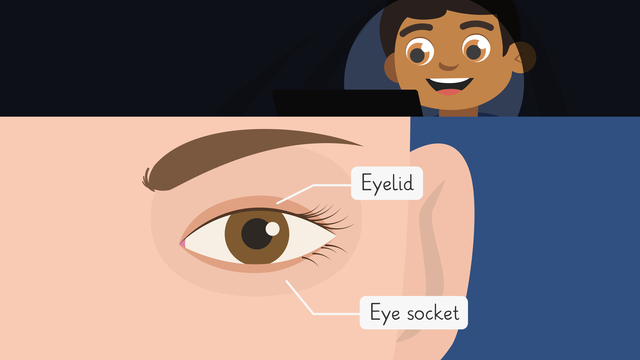Your Teeth


Basics on the topic Your Teeth
Find out about the different types of teeth humans have.
Your Teeth exercise
-
Identify how many different types of teeth you have.
HintsWe have teeth that bite, teeth that tear and teeth that chew.
The types of teeth are located in different places for their special jobs.
SolutionThere are three different types of teeth in your mouth.
-
Locate the different types of teeth in your mouth.
HintsYou have four canine teeth; two on the top and two on the bottom. These teeth help you to hold and tear food.
Molars are located in the back of your mouth.
SolutionIncisors are located in the front of your mouth. Canines are located next to the incisors. Molars are located in the back of your mouth.
-
Show the different parts of a tooth.
HintsEnamel is the outer, protective coating of a tooth.
The neck of the tooth sticks out of the gum.
SolutionThe root is at the base of the tooth and holds it in place.
The neck is the part of the tooth that sticks out of the gum.
The crown is the top of the tooth.
The enamel is the top, outer layer of protective coating.
-
Recall what each type of tooth does.
HintsThe teeth in the back of your mouth help with chewing.
Sharp canine teeth help to rip food.
SolutionIncisors are for biting.
Canines are for ripping.
Molars are for chewing. -
Identify why baby teeth fall out.
HintsYou have adult teeth waiting to move up and take the place of baby teeth.
As you get older, you need adult teeth.
SolutionBaby teeth fall out when an adult tooth grows in.
-
Describe how teeth fall out.
HintsFirst, the adult tooth has to grow.
Before your baby tooth falls out, it will get very wobbly.
Solution- The adult tooth grows.
- The adult tooth pushes the baby tooth.
- The baby tooth wobbles.
- The baby tooth falls out.


 Do you want to learn faster and more easily?
Do you want to learn faster and more easily?














